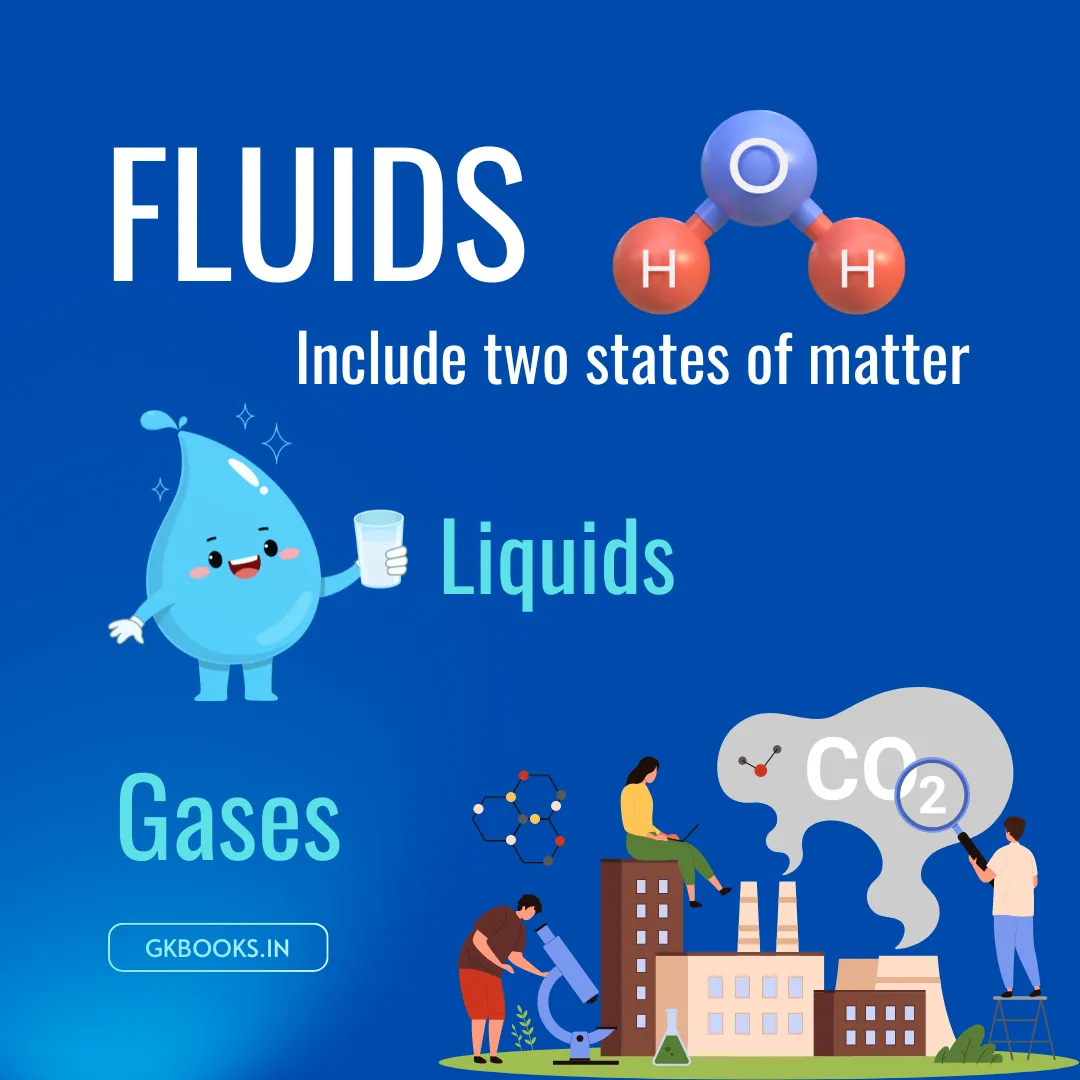In this article, we explore some fundamental physical properties of liquids and gases, which are collectively known as fluids.
The defining characteristic of fluids is their ability to flow, setting them apart from solids in a crucial way.
Both liquids and gases are omnipresent in our environment. Earth itself is surrounded by an atmosphere composed of air, a mixture of gases, and over two-thirds of the planet’s surface is covered by water. This water is essential not only for the survival of all living organisms but also for many natural processes.
Fluids play a vital role in the existence of life. For instance, the human body is primarily composed of water, with fluids mediating almost every process within living organisms, including plants.
Consequently, understanding the behavior and properties of fluids is not just a matter of scientific curiosity but a necessity for comprehending the natural world around us.
✅ Explore Notes on Physics

The Nature of Fluids: Liquids and Gases
So, what exactly are fluids? How are they different from solids, and what is common between liquids and gases? Unlike a solid, which has a definite shape and structure, a fluid has no fixed shape of its own.
Liquids take the shape of the container in which they are placed, while gases expand to fill the entire volume of their containers. In simpler terms, gases are more free-flowing than liquids and are less constrained by physical boundaries.
Both solids and liquids share one property: they have a fixed volume. Gases, on the other hand, do not have a fixed volume and will spread out to fill any available space. This difference in behavior is fundamental to understanding how gases, liquids, and solids interact with their environment.
The Role of Pressure and Stress in Determining Volume
The volume of a fluid—whether a solid, liquid, or gas—is influenced by the stress or pressure applied to it. When we refer to a liquid or solid having a fixed volume, we mean that it maintains its volume under normal atmospheric pressure.
The key difference between gases and the other two states of matter (solids and liquids) lies in how they respond to changes in external pressure. In solids and liquids, the change in volume due to pressure is minimal.
For instance, if you apply a small amount of pressure to a solid or a liquid, its volume will not noticeably change. This is due to their much lower compressibility compared to gases, which are highly compressible and can experience significant changes in volume with even slight pressure differences.
The Impact of Shear Stress on Solids and Fluids
Another critical distinction between solids and fluids is how they respond to shear stress. Shear stress is a type of force that causes deformation in a material.
Solids can resist shear stress to a certain extent, changing their shape but retaining their volume. For example, when you bend a solid object, it deforms but does not reduce in size.
However, fluids behave differently under shear stress. One of the defining properties of fluids—both liquids and gases—is that they offer very little resistance to shear stress.
Even a small amount of shear stress will cause a fluid to flow or change its shape. This characteristic makes fluids much more adaptable to their environment than solids.
Interestingly, the amount of shear stress required to change the shape of a fluid is millions of times smaller than that needed to alter the shape of a solid. This is why fluids flow so easily compared to solids, which maintain their form unless subjected to significant external forces.
The Ubiquity of Fluids in Daily Life
Fluids are not just confined to laboratories and scientific studies; they are everywhere around us and are integral to countless natural processes.
The Earth’s atmosphere is a massive layer of gaseous fluids, while oceans, rivers, and lakes constitute liquid fluids.
These fluid systems are crucial to maintaining the balance of life on Earth. Without fluids, life as we know it would cease to exist.
The role of fluids extends to biological systems as well. In mammals, including humans, water makes up a significant portion of body weight.
It serves as a medium for all physiological functions, from transporting nutrients to removing waste.
Similarly, plants rely on fluids to absorb water and nutrients from the soil. Without an understanding of fluid dynamics, we would struggle to explain the mechanics behind these processes.
Liquids and Gases: A Closer Comparison
While both liquids and gases are categorized as fluids, they do exhibit several distinct properties. As previously mentioned, a liquid has a definite volume but no fixed shape. When you pour a liquid into a container, it will take the shape of the container, filling it from the bottom up.
On the other hand, gases do not have a fixed volume or shape. A gas will expand to fill the entire volume of its container, no matter how large or small that container may be. This property makes gases much more flexible than liquids, as they can adapt to any space provided to them.
Another key difference lies in compressibility. Liquids are only slightly compressible, meaning that their volume does not change significantly even when pressure is applied.
Gases, however, are highly compressible. A gas can be compressed into a much smaller volume when pressure is applied, making them useful in a wide range of applications, such as air compressors and aerosol cans.
The Importance of Understanding Fluid Properties
Understanding the properties and behavior of fluids is essential for a variety of scientific and engineering fields. Fluid mechanics, the study of fluids and their movement, is a vital branch of physics with applications in everything from designing aircraft to understanding weather patterns. Engineers use principles of fluid dynamics to design pipelines, predict airflow over wings, and develop better cooling systems for electronic devices.
In biology, fluid dynamics helps us understand how blood flows through veins and arteries or how plants transport water through their tissues. In medicine, understanding fluid pressure and flow is crucial for designing equipment like ventilators and dialysis machines.
Conclusion: Why Fluids Matter
Fluids are an indispensable part of our lives and the world around us. From the air we breathe to the water we drink, fluids play a vital role in sustaining life on Earth. Understanding their unique properties—such as their ability to flow, respond to pressure, and adapt to different containers—allows us to appreciate their significance in both natural and human-made systems.
Whether studying the atmosphere, exploring the depths of the ocean, or examining biological processes, a deep understanding of fluids provides insights into the workings of the universe. It is through the study of fluids that we can develop new technologies, improve our quality of life, and further our understanding of the natural world.
Source: NCERT / MECHANICAL PROPERTIES OF FLUIDS





